The bandwidth of Ethernet Cable has become the default physical connection for most business and home networks.
People constantly want to purchase a high ethernet cable to enjoy high speeds and ideal bandwidth.
However, there are several aspects involved when looking at the bandwidth of ethernet cables, some of which we will discuss in this piece.
Table of Contents
- Definition of Bandwidth
- Internet Speed vs. Bandwidth: What’s their relationship?
- How Does Cable Bandwidth Matter for Your Ethernet?
- Should I choose a higher Ethernet category cable?
- How to Calculate Speed and Bandwidth Needs for Your Business Internet
- How to Use Your Speed and Bandwidth Specs to Shop for Business Internet
- Conclusion
Definition of Bandwidth
You can define bandwidth as the measurement unit for the amount of data transmitted per unit of time. The more bandwidth available, the higher the amount of data transmitted per unit of time.
The formula to calculate the bandwidth is as follows:
B= [f(max) – f(min)] bits/sec,
Where B is the bandwidth, f(max) and f(min) are the frequency.
What is Frequency? It is the measure of the number of oscillations that take place in a data signal per second. In a networking situation, this data passes via signals made up of waves.
The formula to calculate the frequency is as follows:
f=( 1 / T) Hz,
where F is the frequency of the signal wave; T is the period of the oscillation in seconds.
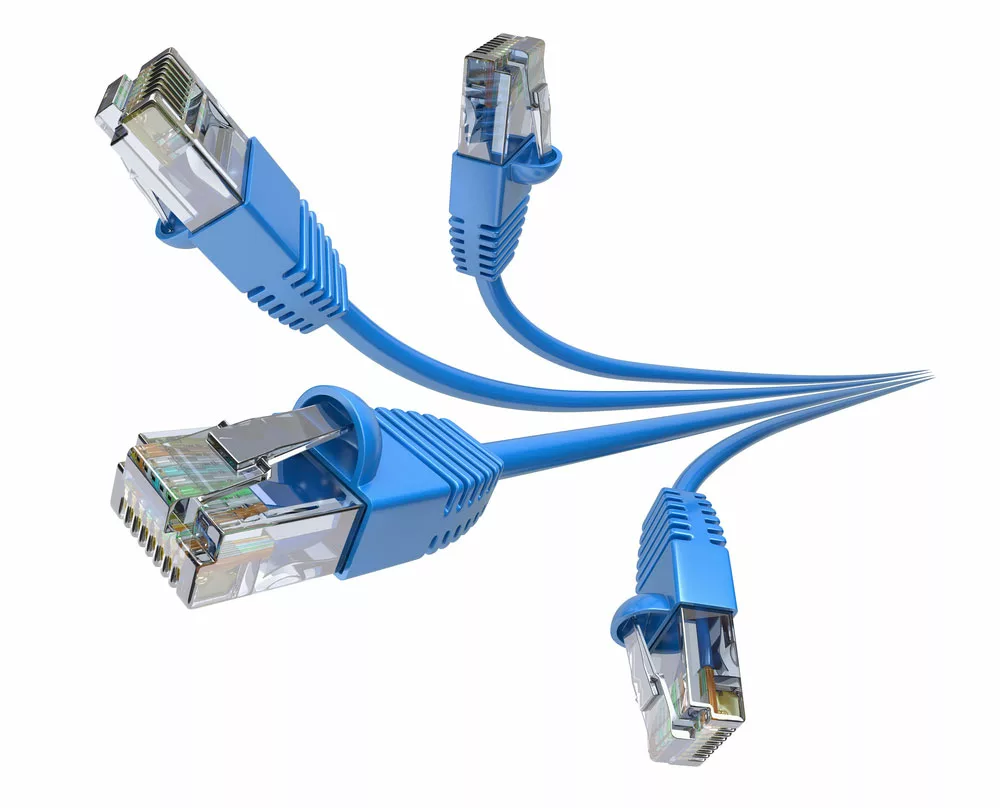
Blue ethernet cable
Internet Speed vs. Bandwidth: What’s their relationship?
Even though internet speed and bandwidth are interrelated, they remain different. Whereas network speed is the transfer rate of data from a particular source system to a designated site, network bandwidth refers to the amount of data transmitted per second. When you combine the two, you get something called a network throughout.
Most people assume that high bandwidth networks provide quick speeds and excellent throughout. However, in a real sense, that’s not always the case when you begin to consider latency.
Latency refers to the delay data packets experience while moving through a network, often the cause of poor application response time that frustrates many users.
There’s always slight latency overhead in networks because of the laws of nature – specifically, the speed of light. Light travels at a rate of 200,000 km per second through one optical fiber.
Therefore, for every 100 km, a packet traverses over a network, and a half millisecond is added to the one-way latency. Like train tracks run over a causeway, so do networks.
For instance, you can traverse 20 km of cable to go 8 km of point-to-point distance, and as the distance increases between the two points, so does latency.
How Does Cable Bandwidth Matter for Your Ethernet?
Below are the factors that bandwidth affects your internet connection.
Transmission Speed
The frequency/bandwidth of an ethernet cable can affect the transmission rate that the copper cables can handle. That means the higher the copper cables, the greater the transmission speed it can achieve. For instance, a CAT6 network cable can support close to 250 MHz, which is double that of a CAT5e cable (100 MHz).
Transmission Distance
The frequency/bandwidth supported by a cable affects the transmission distance. In most cases and under identical conditions, as the frequency increases, so will the transmission distance, and vice versa.
For instance, if you are working a 10Gbps link with an 80m transmission, it’s probably best that you pick a Cat6a cable of 500MHz and not a CAT6 network cable of 250MHz because the former can transfer data over 100m at a rate of 10Gbps.
The Cat6 can only support up to 55m at a rate of 10Gbps.
A Glimpse of Ethernet Cable Bandwidth
| Cat5 Cable Internet Speed: 10/100Mbps for a Distance of 100m | The CAT5 ethernet cable is the oldest variation of these cables and can support 10 to 100 Mbps speeds and a bandwidth of 100MHz.However, as technology continues to evolve, these types of old-fashioned cables are no longer a recognized standard and are rarely found in stores. |
| Cat5e Cable Internet Speed: 1000Mbps for a Distance of 100m | The CAT5e is an improved version of the CAT5 cable and offers up to 100Mbps. Theoretically, it is 10x faster than Cat5 and decreases crosstalk between two wires within a case. It is also widely used and is available in most stores. |
| Cat6 Cable Internet Speed: 1000Mbps for a Distance of 100m and 10Gbps for a Distance of 55m. | The Cat6 is an advanced cable certified to handle speeds of up 250MHz and, in ideal circumstances, as much as 10Gbps. Other improvements include thinner wires, and better insulation, both of which offer a better signal-to-noise ratio. All these features mean that it can adapt easily to environments that may have instances of higher electromagnetic interference. It also comes in two forms: the STP (Shielded Twisted Pair) and UTP (Unshielded Twisted Pair). |
| Cat6a Cable Internet Speed: 10Gbps for a Distance of 100m | The Cat6a ethernet cable offers users 10Gbps transmission rates over 100m with bandwidth up to 500MHz. It is typically available in STP form and is ideal for industrial environments since it lacks the flexibility required for a residential setting. |
| Cat7 Cable Internet Speed: 10Gbps for a Distance of 100m | The Cat7 cable can achieve speeds of 10Gbps and has a bandwidth of 600MHz. It’s designed with screened and shielded twisted pairs of wires that eliminate alien crosstalk. So it is better suited for data centers than home applications. |
| Cat8 Cable Internet Speed: 40Gbps for a Distance of 20m | The Cat8 ethernet can support a bandwidth of about 2000MHz with a speed of 25/40Gbps. It is currently the fastest ethernet cable that is not designed specifically for office environments. Often, you can use it in data centers to connect servers to switches. |
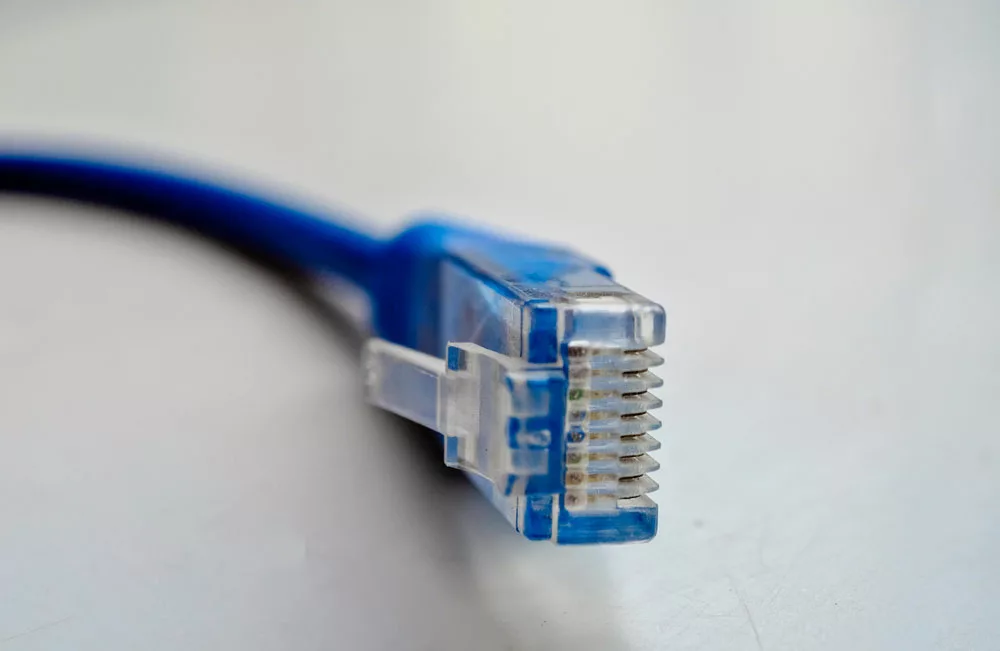
Cat6 Cable
Should I choose a higher Ethernet category cable?
The answer to this question is not so straightforward. The fact of the matter is that it will depend on the actual application environment.
If your ISP only offers you 10Gps, you will have no choice but to use the CAT5e cable of 100MHz.
Also, you cannot expect to achieve 10Gbps even if you use a 10G Cat6 cable of 250MHz.
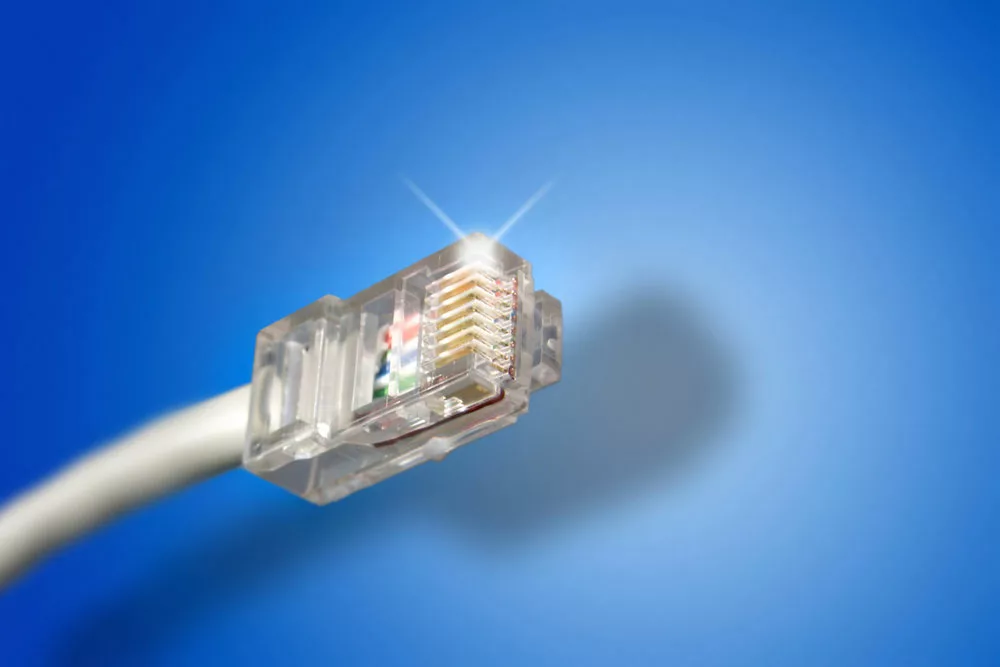
Grey ethernet cable
How to Calculate Speed and Bandwidth Needs for Your Business Internet
Understanding how much bandwidth and speed you need for your business are not as complicated as some may think. The truth is that there are several ways to approach the issue.
However, combining them will likely give you the most comprehensive overview of your business requirement. They are as follows:
1. Use Basic Math.
It is a simple method that requires you to have readily available relevant data. The formula follows:
(Sum of bandwidth requirements for all software applications) x (Number of user devices on your network).
2. Conduct a Speed Test to Evaluate Your Current Internet Performance.
You should first run a speed test to upgrade your slow business internet connection. So you can evaluate how your estimated bandwidth and internet speeds compare to your current package.
Doing so means that you will be able to invest confidently in better connections when the time comes.
3. Understand Speed and Bandwidth Needs Over Time Through The Use of Bandwidth
Bandwidth monitoring will allow you to collect real-time usage data across your network. You can see how frequently your network strain occurs and decide whether or not to add more bandwidth.
As mentioned, the monitoring process captures real-time data linked to your download and upload speed and attributes bandwidth usage to particular apps.
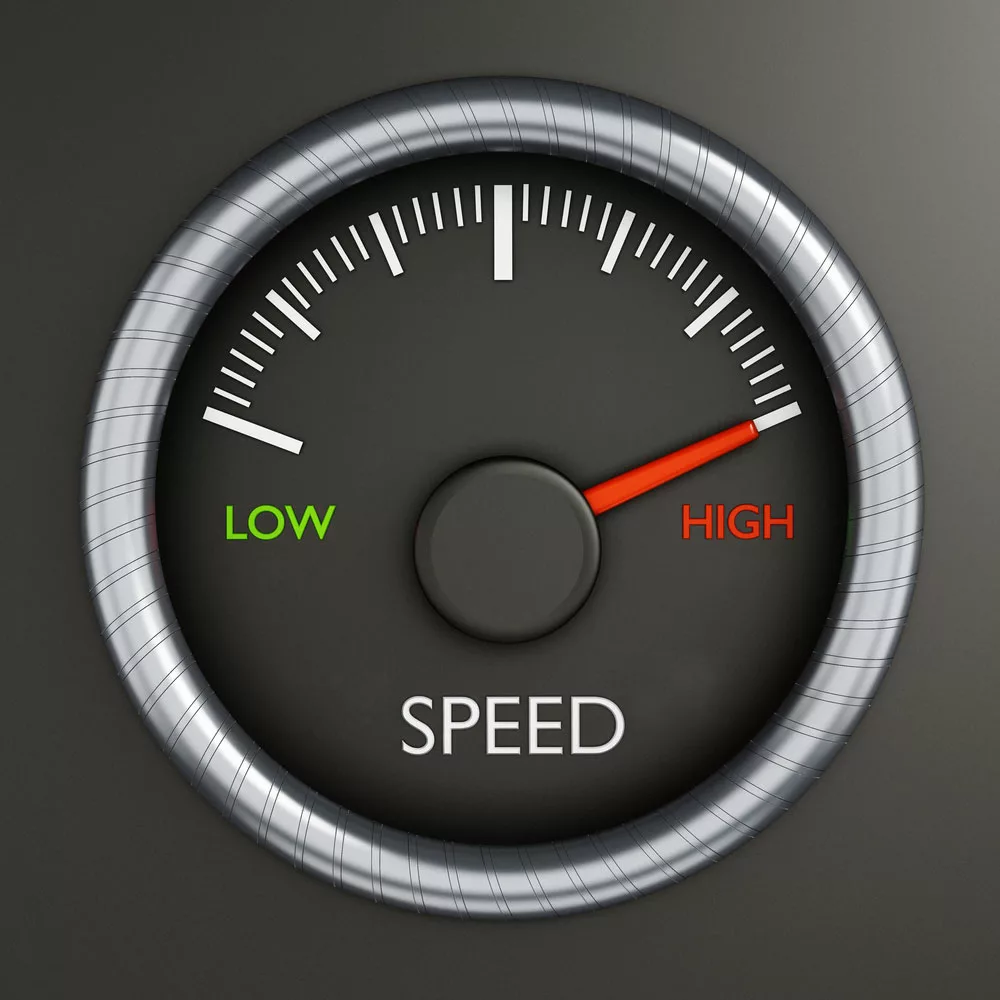
Internet Speed Test
How to Use Your Speed and Bandwidth Specs to Shop for Business Internet
We can all agree that business internet options are not created based on the same parameters. But the way providers advertise their packages often leads to confusion.
That’s particularly true on the users’ side when sharing bandwidth with neighbors results in homeowners rarely receiving the promised speeds.
Let us look at how you can use your speed and bandwidth specs to shop for business internet.
1. Having the right kind of internet connection should be a priority.
High-bandwidth businesses with more than 10 employees should prioritize having dedicated internet access, also known as DIA.
That usually means narrowing your focus to fiber connections since they guarantee ideal bandwidth at any given moment because it is not shared.
Such a situation also means you can easily achieve data-intensive projects like shipping codes and editing audio-visual files.
However, as one would expect, DIA tends to cost more than your other kinds of business internet and often comes with longer package contracts. So you have to weigh its viability to your business framework.
2. Ensure You See What’s Spelled Out in the Service-Level Agreement
Promises of ideal speeds and great bandwidths mean almost nothing if your potential ISP does not back them up with a strong SLA.
As a result, make sure you review yours before committing to anything. Since they can impact your network, you should also understand how they handle important variables like latency, jitter, and packet loss.
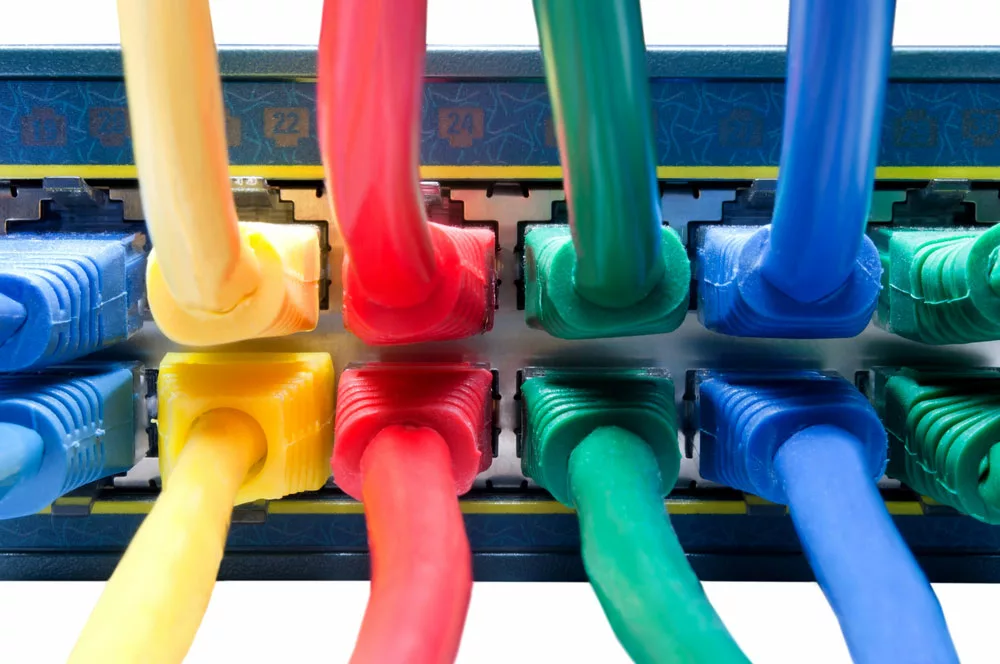
Colored ethernet cable
Conclusion
Now that you better understand some of the nuances of bandwidth ethernet cables, you can objectively decide based on your needs and pick the right internet plan. For all your Ethernet cable needs, feel free to visit Cloom Tech.
